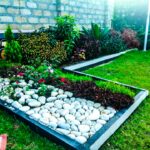Aquaponics towers are hydroponic systems which grow food within boundaries which do not spoil the environment. Aquaponics towers merge fish farming and soil-less plant farming by employing nutrient rich wastewater from fish tanks to nourish fruits, vegetables, and herbs.
Information describing aquaponics towers
To understand aquaponics towers, the biological processes responsible for effectively exchanging nutrients between fish and plants must be examined first. The waste products of fish kept in tanks accumulate as ammonia-rich wastewater. The water is sent through the plant bed, from which valuable bacteria change ammonia into nitrites and nitrates. Plants readily absorb the nitrates as essential nutrients for growth.
Well-structured aquaponic towers must strike a fine balance between nutrient release from fishes and uptake by plants, which lead to ultimate ecosystem health. Excessive numbers of fish or excessive ammonia will harm the plants. Too few fishes starve the plants. Water chemistry testing, occasionally coupled with adjustment of fish stocks and plant densities, and upholds this.
Compact stackable designs of aquaponics tower systems solve issues related to limited vertical space common in urban settings. Towers comprise cascading beds utilizing siphon drains with various nutritional wastewater tiers. Plants growing vertically orientated gardens enjoy maximum sunlight exposure, yielding approximately twenty times more produce per square foot than conventional soil plots. Aquaponic towers suit dwarf fruit trees, vine vegetables, leafy greens, and shade-loving herbs.
Typical designs for such towers include intermediate bulk containers; cedar boxes lined with pond liner material, vertical pipes, or internal custom wall frames. Tower materials must be non-poisonous and food-friendly. Grow media like expanded clay pellets or coconut coir offer soil-less root anchoring. Free tower plans are available online to encourage construction.

One advantage of enclosed aquaponics towers is that they can produce crops all year round because climatic variations cannot affect them. Towers can be easily combined with renewable energy systems, rainwater harvesting, and wastewater recycling processes so as to enhance more sustainable ends. However, when introduced into horticultural lighting solutions, the yields from such farms could reach unprecedented quantities, turning them into future enclosed vertical fresh food factories.
High initial capital costs associated with system installation, electrical expenses incurred in running it, monitoring/maintenance costs, and learning curves hinder wide-scale adoption. Poor water quality management quickly stresses delicate ecosystems. Root zone clogging, pipe leakages, water pump failures, and aphid infestation can lead to the complete collapse of any system. Curious students have to come into contact with tower systems directly. Manuals showing how to build and keep them in good working order can make small-scale farming more successful.
These will have a cumulative effect; Aquaponics farm tours, university courses, conferences, and entrepreneur incubator programs will all be aimed at giving momentum or an impetus to this new revolution. Cities globally would do well to pilot programs that enable communities most affected by food scarcity to own and run aquaponic towers together if they want to end it while building resilience.
End
Vertical integrated aquaponics towers offer a sustainable solution for improving our limited fresh food supply without further burdening our planet. When minds merge with resources, nutritional abundance trickles up towers that reach out for the sunlight.
















